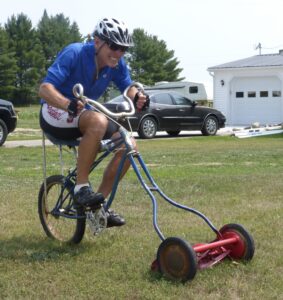
Last year in November, my dear friend Estelle Nadel passed away. She was about to turn eighty-nine-years-old. In January of 2024, only months after her death, her graphic novel memoir, THE GIRL WHO SANG, came out into the world. This saga of Estelle’s (Enia in Polish) traumatic childhood as a young Jewish girl in Borek, Poland during the Holocaust, is moving, heart-wrenching, and powerful. And the story is greatly enhanced by the drawings of illustrator and storyboard artist, Sammy Savos.
Estelle’s story is one of life-threatening events, narrow escapes, and compassionate neighbors. She told it many times – in schools, on the news, and ultimately for the Steven Spielberg’s Survivors of the Shoah Visual History Foundation. She cried during every presentation. She couldn’t help it. Her life had been so difficult. But she was driven to keep going and often said, “People need to know this really happened… and that it happened to me. I have to do it now because I won’t be around forever.”
I was so happy when Estelle told me she had found both an agent and a publisher. I also told her that publishing a book, especially one with illustrations, could take years. At first, she wasn’t sure about it being a graphic novel. She didn’t want the illustrations to minimize the seriousness of what had happened to her. But her agent and editor felt like this was the best format to use in order to get her story into the hands of young readers. And after seeing the final product, I totally agree.
Last month, Estelle’s illustrator, Sammy Savos, did a Zoom presentation for one of my critique groups. I had been communicating with Sammy via email for many months and trusted that she would give us a good sense of her process. I hadn’t met Sammy in person or even spoken to her on the phone. Still, her heartfelt and appreciative correspondence made me think we were in for a treat. And boy, was I was right. Sammy’s talk was INCREDIBLE.
For a group of mostly kidlit writers, seeing and hearing about Sammy’s illustration process was mind-boggling. Not only did it take four-and-a-half years to complete the book, Sammy’s attention to detail was unprecedented. She had a very personal story to tell with many emotional components. Estelle’s father, sister, and one of her brothers were taken to Auschwitz and murdered. Her mother was shot in front of their small farm house. Estelle (Enia) and her one of her surviving two brothers were put in a jail cell as young children. They miraculously escaped and found their way to a neighbor’s house. That neighbor not only took them in, she hid them for over two years in the attic of her barn. And even when the war was over and Estelle and her remaining family members were liberated by the Russians, she still wasn’t safe. She and her brothers were taken to a displaced persons’ camp in Austria. But after a soldier heard Estelle sing, she and her brothers were given passage on a ship to America.
Sammy did an amazing job capturing Estelle’s life in Poland, giving particular attention to the buildings, clothing, and facial expressions of family members. She took great care in choosing the proper color palette to give the story a realistic tone. She made sure all the characters were proportional to one another, wore the proper clothing, and kept detailed notes about the timeline of events. Many of her drawings were inspired by the few photographs Estelle had from her childhood, and from her subsequent trips to Poland. Other information was gleaned by Sammy’s own meticulous research.
But most importantly, Sammy wanted to get the story right. She wanted to honor Estelle and her family, by getting the emotional and factual information as true as possible. She wanted young readers to learn about what had happened to Jews during the Holocaust by learning about a real person who had experienced it. Estelle and Sammy never met, but Sammy would often confer with Estelle by phone. And through it all, they developed a close bond. Sammy is in her twenties, Estelle was in her eighties. But the two connected as if they were related. As it turns out, members of Sammy’s family lived about an hour away from Estelle’s hometown of Borek, Poland before they came to America.
Estelle loved to sing, and I had the privilege of singing with her in our synagogue’s choir for many years. Whenever we were together, she always made time to ask me about my family and how I was doing. Despite her traumatic childhood, Estelle remained positive, active, and compassionate. She went on yearly trips to Poland where she participated in The March of the Living. She, and the grandson of the neighbor who had hidden her, gave talks in Polish schools about what had happened during the war. But her biggest claim to fame, Estelle’s signature line was telling everyone she cared about that she loved them. She didn’t want those words to go unsaid.
I am so thrilled that THE GIRL WHO SANG is out in the world to honor her legacy. Thank you Estelle, for telling your story, and thank you, Sammy, for bringing it to life.











 As I get ready to submit my latest middle grade novel to agents, I am filled with a mishmash of emotions. I’m excited, nervous, anxious, and dare I say it… petrified! I have been working on this book, on and off, for over ten years. It has been written, critiqued, revised, workshopped, re-imagined, edited, and rewritten. This is my seventh draft. And although it is way better than when I started, I am still filled with a case of the jitters as I get ready to set it out into the world.
As I get ready to submit my latest middle grade novel to agents, I am filled with a mishmash of emotions. I’m excited, nervous, anxious, and dare I say it… petrified! I have been working on this book, on and off, for over ten years. It has been written, critiqued, revised, workshopped, re-imagined, edited, and rewritten. This is my seventh draft. And although it is way better than when I started, I am still filled with a case of the jitters as I get ready to set it out into the world.
 Ever since I made the decision to become a serious writer, members of my family have asked me to edit their writing projects. I have said yes to college essays, business presentations, and even a Master’s thesis. But before I ever agree to do this, I always require the writer use one important self-editing tool – they must read their work out loud! They can read it alone in a quiet room or give a dramatic presentation to the dog. It doesn’t matter, as long as they do it. This may sound like a common revision strategy to those of you who have been writing for a long time. But believe me, many people skip this step.
Ever since I made the decision to become a serious writer, members of my family have asked me to edit their writing projects. I have said yes to college essays, business presentations, and even a Master’s thesis. But before I ever agree to do this, I always require the writer use one important self-editing tool – they must read their work out loud! They can read it alone in a quiet room or give a dramatic presentation to the dog. It doesn’t matter, as long as they do it. This may sound like a common revision strategy to those of you who have been writing for a long time. But believe me, many people skip this step.


